Heroes of the Artsakh Liberation Struggle
Arthur Mgrditchyan (1959-1992)
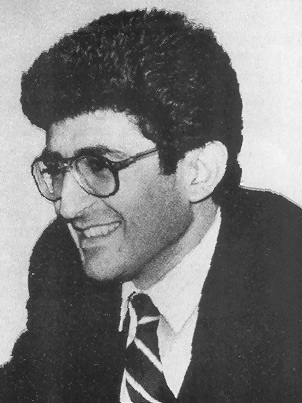 Very few people can be said to have had as large an impact on the liberation movement of Artsakh as Arthur Mgrditchyan. He was a model Tashnaktsagan who internalized his ideological oath and served his people with integrity and conviction.
Very few people can be said to have had as large an impact on the liberation movement of Artsakh as Arthur Mgrditchyan. He was a model Tashnaktsagan who internalized his ideological oath and served his people with integrity and conviction.
Born in the Etilou village of Hatrout on February 16, 1959, Mgrditchyan was a humble activist and sterling intellectual. He received his PhD in history from Yerevan State University in 1980 and went on to be appointed as principle of the Hatrout National Museum.
Mgrditchyan later joined the ARF and became a central figure in the defense and organization of his native region of Hatrout. He went on to be elected as the local representative of Hatrout to the newly formed Artsakh National Assembly. Following the official proclamation of the Artsakh Republic, the National Assembly voted overwhelmingly for Mgrditchyan to become the first President of the country on January 8, 1992.
During his term as President, Artsakh faced one of the most difficult periods in the liberation struggle. It was blockaded on all sides, prices for basic goods were sky high, Stepanakert was being bombed daily, and the government of Armenia exhibited a neglectful stance toward their struggle. Nevertheless, Mgrditchyan succeeded in unifying the people and leading Artsakh to various military victories. It was also during his term that the world’s attention began to focus more intently on the war for survival being waged by Armenians.
On the evening of April 14, 1992—only 97 days into his presidency—Mgrditchyan tragically passed away in Stepanakert. His central role in the formation of the Republic of Artsakh and his unwavering dedication to its victorious struggle made him a national hero for Armenians worldwide.
Mher Choulhajian (1967-1993)
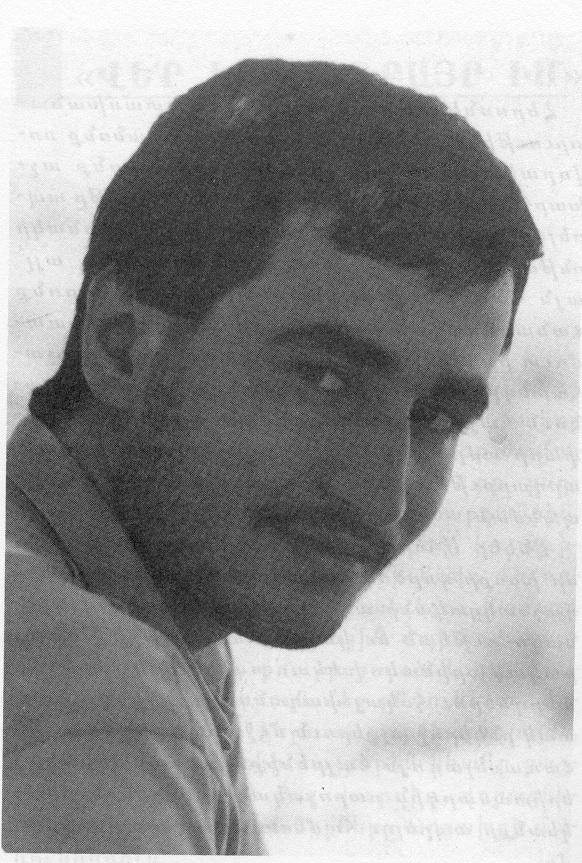 Born in Beirut in 1967, Choulhajian was steeped in ARF community life at a very young age. During the Lebanese Civil War, he took part in the self-defense of the Armenian community as a member of the Lebanese Armenian Youth Association (LEM). Serving on executive and leadership positions, he took on various responsibilities and helped create a spirit of unity among all of his fellow ungers.
Born in Beirut in 1967, Choulhajian was steeped in ARF community life at a very young age. During the Lebanese Civil War, he took part in the self-defense of the Armenian community as a member of the Lebanese Armenian Youth Association (LEM). Serving on executive and leadership positions, he took on various responsibilities and helped create a spirit of unity among all of his fellow ungers.
In 1989, Choulhajian earned a Bachelor’s degree in science from the American University in Beirut. His goal was to continue his studies and utilize his talents for the betterment of his homeland. Soon after joining the ARF in 1990, he went to Armenia to further his education at Yerevan State University.
However, the struggle of his people in Artsakh kept calling him. As a firm believer in the ideology of Tebi Yergir, he felt that the first step in the process of rebuilding his homeland was the liberation of Artsakh. On August 23, 1993, while surveying the recently recaptured border regions of the Marzili village in Marduni, his vehicle exploded from a land mine.
Choulhajian is one of the many Diasporan volunteers that went to fight in Artsakh. He personified the pan-Armenian ideology of the ARF which does not recognize the differences created by geography among Armenians. He reconnected the links between Armenians that had been broken for over 70 years and sacrificed his young life for the just cause of his people.
Ashod “Pegor” Ghoulyan (1959-1992)
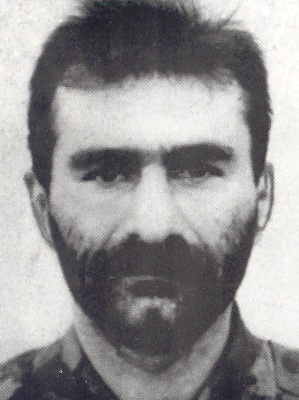 There are some names which, when uttered, conjure up emotions of pride, patriotism and undying heroism. One of those names is Ashod Ghoulyan.
There are some names which, when uttered, conjure up emotions of pride, patriotism and undying heroism. One of those names is Ashod Ghoulyan.
Born in Baku in 1959, he soon moved to his native village of Khentsrisdan (Asgerani region). He became involved in the Artsakh struggle from the very beginning, starting in 1987 with the gathering of signatures and petitions. By the time the mass protests started, he was already questioning the effectiveness of demonstrations and contemplating the necessity of armed struggle.
He joined the ARF in 1990 and went on to become a legendary commander who took part in most of Artsakh’s major heroic battles: Askeran, Shahoumian, Lachin, Mardagerd, Grgjan, Arkhavend, and Malibeili to name a few. It was also the first Artsakh battalion, under Pegor’s command, which was the first to enter Shoushi on the morning of May 8, 1992, during the city’s decisive recapturing.
Ghoulyan received his nickname “Pegor” (meaning fragment) due to the fact that he was wounded 11 times, with the shrapnel of mines, bullets and rockets lodged within his body. On August 24, 1992, he received his final fatal bullet while fighting to liberate the Trmpon village in Mardagerd.
Pegor is remembered as saying, “Patriotism is nothing else than the wholehearted fulfillment of the responsibilities which have been put on our shoulders.” It was with this faith that he took on the many responsibilities of his nation and helped ensure the liberation of Artsakh.
Shahen Megherian (1952-1993)
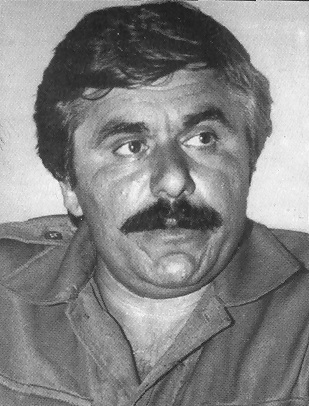 He was born in the Gyulistan area of the Shahoumian region in Artsakh on January 2, 1952. Shahen received his primary education in the region and continued his studies at Yerevan State University, where he majored in economics. After graduation, Shahen returned to Gyulistan and became the Chief Economist of Manufacturing and Production in the Shahoumian region and later a food provider for his village. He also became the President of Agricultural and Production Management.
He was born in the Gyulistan area of the Shahoumian region in Artsakh on January 2, 1952. Shahen received his primary education in the region and continued his studies at Yerevan State University, where he majored in economics. After graduation, Shahen returned to Gyulistan and became the Chief Economist of Manufacturing and Production in the Shahoumian region and later a food provider for his village. He also became the President of Agricultural and Production Management.
In 1991, Shahen was elected as acting president of the Shahoumian Committee and took on command of the Mardagerd regiment. He was also a proud member of the ARF and attended the organization’s 25th General Assembly.
In the early stages of the liberation struggle, Megherian and his band of guerilla fighters would penetrate enemy lines, carrying out irregular warfare in an attempt to liberate Armenian lands from Azeri occupation. Two weeks before his death, Megherian’s home village, Gyulistan, was liberated as a first step towards the liberation of the Shahoumian region.
On April 17, 1993, under the fire of Azerbaijani air attacks, Shahen Megherian was killed.
Megherian embodied the spirit of the Armenian volunteer organizer, the skilled soldier and fearless leader.
Tatoul Grbeyan (1965-1991)
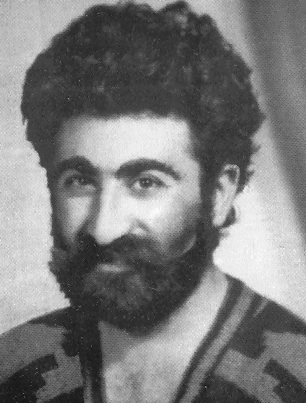 Tatoul Grbeyan was a popular local school teacher in the village of Kedashen who emerged as one of the early heroic martyrs of the Artsakh liberation struggle.
Tatoul Grbeyan was a popular local school teacher in the village of Kedashen who emerged as one of the early heroic martyrs of the Artsakh liberation struggle.
With his stated determination to “stay and defend the homeland and its people forever,” Grbeyan served as an inspiration to those around him. He would always be seen with a natural smile on his face—full of hope, faith, and an iron will.
By 1988, he was already an active member of the Miastum (Unification) Movement and was fully devoted to seeing his homeland liberated from foreign oppression. In 1990, he joined the ranks of the ARF and took part in the self-defense battles of Kedashen and Martunashen.
On April 30, 1991, the Soviet government attempted to extinguish the heart of the Artsakh movement through terror and ethnic cleansing. With the enlistment of the notorious Azeri “black beret” forces, the Soviet army surrounded Grbeyan’s village of Kedashen and subjected the local population to violence and forced evacuation. The men were arrested while the village was bombarded by artillery fire.
Although the population was unable to mount an organized resistance, Grbeyan bravely stood against the odds to defend his home against the military onslaught. He was able to alone capture a Soviet armored car with twelve of its Russian officers and commander, but ultimately fell victim to the sinister operation.
Grbeyan’s deeds remain one of the bravest episodes in the history of the Artsakh struggle. His sacrifice for his people will continue to serve as an inspiration for countless generations of Armenians.
Viken Zakarian (1969-1992)
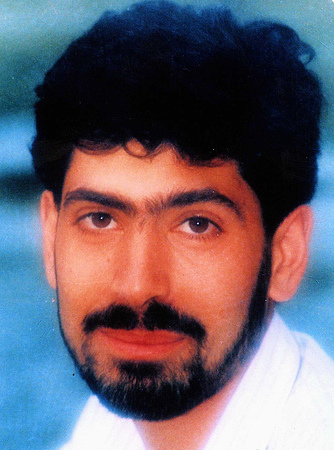 Born on March 15, 1969 in Beirut, Viken Zakarian was the embodiment of the ARF’s celebrated angeghdz zinvor (“sincere soldier”). He worked tirelessly for his community without seeking praise and journeyed to his homeland to take part in its historic struggle for liberation.
Born on March 15, 1969 in Beirut, Viken Zakarian was the embodiment of the ARF’s celebrated angeghdz zinvor (“sincere soldier”). He worked tirelessly for his community without seeking praise and journeyed to his homeland to take part in its historic struggle for liberation.
As a youth, Zakarian was a member of the ARF Lebanese Youth Association (LEM), in which he took on countless responsibilities and leadership positions. During the Lebanese Civil War, he helped defend the Armenian community and served on the frontlines during the most critical periods of the war.
After graduating from Melankton and Haig Arslanian College in 1988, he attended Haigazian University where he studied business administration. But the cry for freedom in Artsakh was one he could not ignore. On April 17, 1992, he left Lebanon for Armenia and soon crossed over to Artsakh.
Upon arrival, he joined forces with the ARF battalion and took part in the important battles that liberated Shoushi. He was martyred on May 8, 1992, while capturing the village of Lisagor. He was only 23 years old.
Zakarian represented the true spirit of a committed Armenian youth. He was determined to be everywhere at once; doing anything and everything that was needed to see the dream of a free, independent, and united Armenia turn into reality.
He was buried in the Yeraplour Martyrs’ Pantheon in Yerevan.

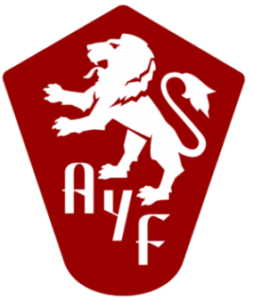
Leave a Reply
Want to join the discussion?Feel free to contribute!